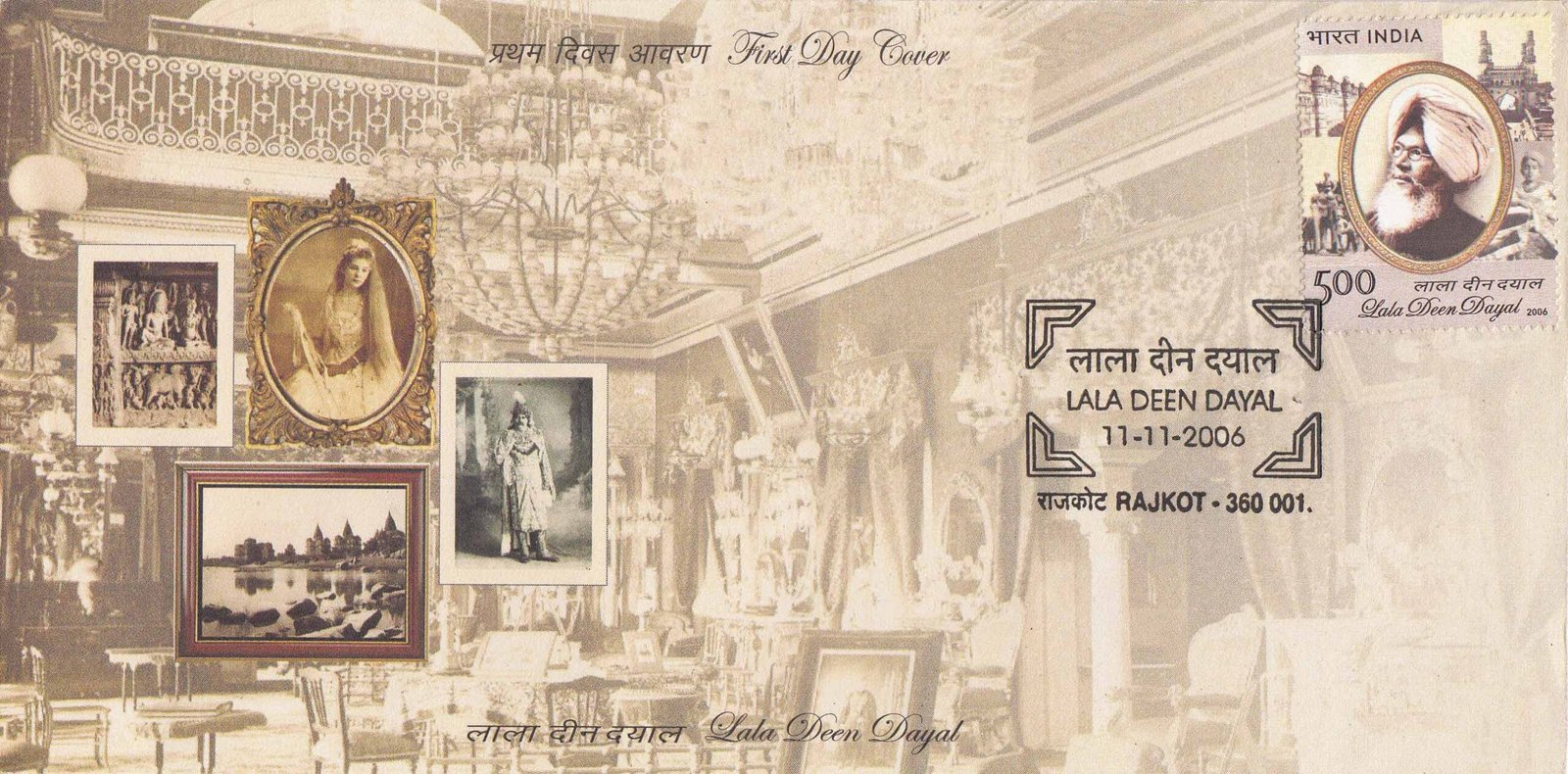Lala Deen Dayal

Technical Data
| Stamp Set | Death Centenary of Lala Deen Dayal |
|---|---|
| Date of Issue | November 11, 2006 |
| Denomination | Rs. 5 |
| Quantity | 400,000 |
| Perforation | line13¼ |
| Printer | India Security Press, Nasik |
| Printing Process | Photogravure |
| Watermark | No Watermark |
| Colors | Multicolor |
| Credit (Designed By) | Sh. Sankha Samanta |
| Catalog Codes |
Michel IN 2170 Stamp Number IN 2173 Yvert et Tellier IN 1935 Stanley Gibbons IN 2359 WADP Numbering System - WNS IN050.2006 |
| Themes | Animals (Fauna) | Anniversaries and Jubilees | Buildings | Elephants | Famous people | Men | Photographers | Photographs |
The pioneer of photography in India, Lala Deen Dayal left a brilliant visual record of the lifestyle, events and monuments of late nineteenth century, displaying ingenuity and artistry, so that his photography were seen as expressions of fine arts, competing with traditional paintings and even replacing many other forms of printing art.
Lala Deen Dayal was born at Sardhana near Meerut in 1844. After studying at Thomson’s Civil Engineering College at Roorkee, he became an estimator and draughtsman in the Department of Works in the Secretariat in Indore in 1866. Soon, he developed a keen interest in photography. He was encouraged by Sir Henry Daly, the Agent to the Governor General for Central India, who assigned him the task of photographing the royal visit of the Prince of Wales in 1875. Impressed by his talent, Sir Henry took Deen Dayal along with him on his tour of Bundelkhand. In 1882-83 Deen Dayal again toured Bundelkhand with Sir Lepel Griffin who was the Agent at that time. Eighty nine of his photographs of palaces, forts and temples in Gwalior, Khajuraho, Rewa and Sanchi were splendidly reproduced by the Autotype carbon process in Sir Lepel Griffin’s “Famous Monuments of Central India”. Lala Deen Dayal had the opportunity to photograph the Viceroy, Lord Dufferin and Lady Dufferin, and he was appointed as a photographer to His Excellency the Viceroy. Soon he resigned from Government service and became a full time photographer.
Gradually his reputation grew, and the Nizam of Hyderabad, Mir Mahbub Ali Khan appointed him as his court photographer and also conferred upon him the title of ‘Raja Musavir Jung’. In 1897, Lala Deen Dayal was granted the Royal Warrant appointing him Photographer to Her Imperial Majesty Queen Victoria.
He set up studios in Indore, Secunderabad and Bombay. In 1893 his display of views of India received a special award at the World Colombian Exposition in Chicago. Subsequently he received several awards at photographic exhibitions held in Jaipur, Calcutta, London and Poona.
He traveled far and wide in India, visited all the important places of interest and took more than 6000 photographs, which is supposed to be the largest collection ever held by any single photographer, amateur or professional in those times.
He expired in Bombay on 5’h July 1905 at the age of 61.
The true-to-life quality of Deen Dayal’s photographs provide a rare pictorial glimpse into a bygone era, the picturesque opulence, genteel grandeur and gracious charm of 19th century India, with whiskered nobility, hookah bearers, royal palaces, royal hunts, and parades, elephant carriages; golden moments’ captured on silver plates for posterity. Major part of his work now rests with the IGNCA, New Delhi.
First Day Cover

